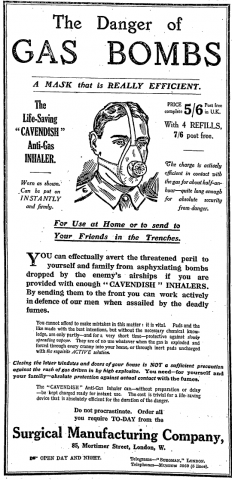Bulldog Drummond and aero-chemical warfare
Given that it climaxes on board an airship which is carrying a devastating new chemical weapon, Sapper’s fourth Bulldog Drummond novel The Final Count (1926) is somewhat disappointing from an airminded point of view. The poison gas is not intended for use against a city, or to terrorise an enemy, but to cover up a […]



